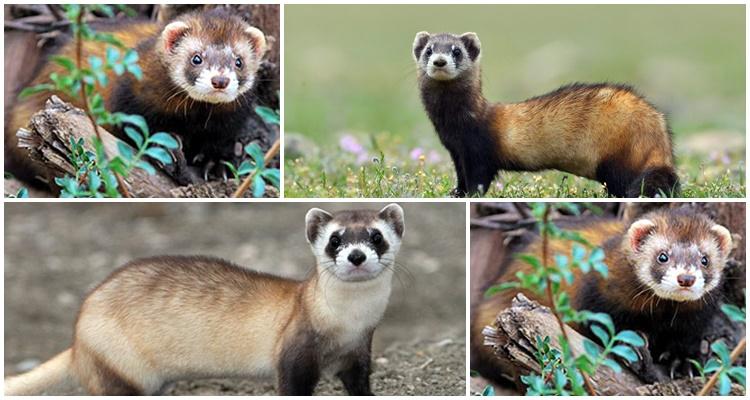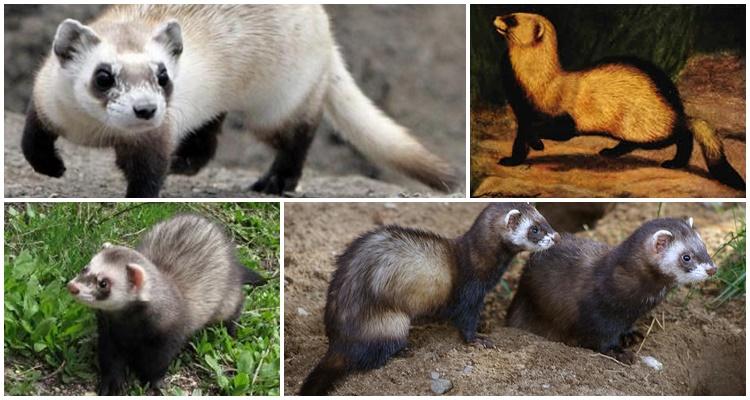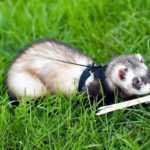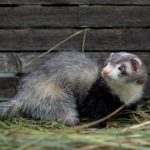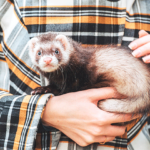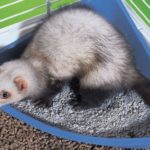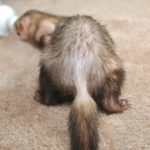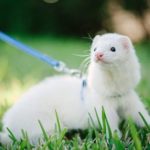The steppe ferret can be found in European and Asian countries; the species' population is distributed from Eastern Europe to the Pacific Ocean. This is a species of nocturnal predator from the mustelidae family. Let's consider the external characteristics of the animal, its habitat, and main diet. How it lives and reproduces in the wild, how to keep it at home as a pet.
Appearance of the steppe ferret
The steppe ferret is similar to relatives from its family.Briefly, it can be described as a small animal with a long, flexible body, 50-55 cm long, with a tail up to 18 cm long. The weight of an adult is up to 2 kg, which makes the species the largest of the ferrets. The awn is long, but sparse; under it there is a thick light down. The end of the tail, paws and muzzle are dark. All 3 subspecies have this coloration, including the Amur ferret.
Subspecies of steppe ferrets
The species includes 3 subspecies - steppe, Hungarian and Amur. They are almost indistinguishable from each other and easily interbreed, producing offspring capable of reproduction.
Habitat
The ranges of the subspecies intersect at the borders. The steppe ferret lives over a vast territory from the Czech Republic and Yugoslavia to the Far East and eastern China. The Hungarian subspecies occupies the area west of the Carpathians, the steppe subspecies lives east of the mountains, and the Amur subspecies lives in the Far East.
What does it eat?
Ferrets of the steppe species, like other members of the family, are predators. They eat plant foods very rarely if they lack vitamins or fiber. Ferrets hunt for typical inhabitants of the steppes - gophers, mice, rodents, hamsters. They can catch small birds, frogs and snakes, insects and larvae. If they live near water, they can fish.
Pets and birds are rarely harmed, as they try not to come close to human habitation. In summer they hunt every day; in winter, when possible, they stock up.
Reproduction
Steppe ferrets spend their lives alone, hunting in their own territory.They allow outsiders in, but mark the boundaries with a strong-smelling secretion. Individuals of the same sex are treated non-aggressively. Females are only encountered during the breeding season, which begins at the end of winter. At this time, males fight, winning the attention of females.
After mating, the female makes a nest in the grass, hay, rarely in tree hollows, and lines the floor with dry grass or the down of killed birds.
Pregnancy lasts approximately 1.5 months. 6-10 chicks are born. If the litter dies for any reason, after 1-4 weeks the female will be ready to breed again. The male helps the mother raise the cubs. The female feeds them with milk for up to 2.5 months, then they learn to get food on their own. Until the babies become covered with fur, the mother sits in the nest almost all the time. Until the ferrets leave the nest, their parents boldly protect them from enemies. Young animals become capable of reproduction at 10-12 months.
Survival in the wild
They are nocturnal and rarely hunt during the day. Permanent dwellings are built on hills, for this purpose they occupy former rodent burrows, expand and equip them. They rarely dig their own burrows and use them as temporary rather than permanent housing. In the fields they make nests in tall grass, in rock crevices, between the roots of stumps.
Steppe ferrets move in long leaps, almost never climb trees, but can jump from heights. Animals can swim and dive. They protect themselves from enemies by spraying a secretion with an unpleasant odor at them.
Keeping at home
The fashion for keeping ferrets as pets has recently appeared in Russia. Representatives of the steppe species can be used for keeping at home, in a cage.Living next to a person, they do not lose their behavior and character. Ferrets try to dig holes and hide things they consider valuable in them. They rummage through flower pots and throw them on the floor.
Just as in nature, they lead a predominantly nocturnal life, which you need to be prepared for when getting an animal. During the day they rest and sleep. Due to the passion to crawl into narrow crevices, the ferret may get stuck somewhere. Therefore, you need to keep the animal in a spacious cage, where it will be most of the time. If the pet is left alone in an apartment or house, it must be locked in a cage.
Among other pets, steppe ferrets get along with cats and large dogs, but they can offend small ones. They should not be kept with hunting dogs. If there are birds, hamsters, or reptiles in the house, you will have to forget about the ferret or keep them in separate rooms so that the victims and the predator do not intersect.
You should not get a ferret if you have a baby in the house. Children usually perceive animals as toys, but, unlike dogs and cats, a ferret will not tolerate being treated with little respect and may bite or scratch. Ferrets have easy contact with older children, so no problems should arise here.
The steppe ferret needs to be fed meat food, given fresh meat and offal. It could be beef, pork, poultry. You can feed the fish, but only occasionally. In addition to natural food, predators eat ready-made combined food in the form of dry granules. If you choose this option, you need to buy only high quality feed. Be sure to have fresh, clean water. You cannot feed table scraps, smoked meats, spicy foods, pickled and fried foods, and sweets. Sometimes you can give a little vegetables or fruits.
Ferrets are smart animals and can be trained to use a litter box, just like a cat. In addition to the cage, you need to purchase a feeder and water bowl, a bed or a hammock in which the ferret will sleep or rest. You will also need shampoo for grooming, a nail clipper, a basket for carrying the animal and a harness for walking. By the way, pets love to walk, but they are just as active outdoors as indoors, so they should only walk under the supervision of the owner.
Hori tolerate any temperature well, so they can go out for walks in summer and winter. Walking has a good effect on the physical condition of the animal and its psyche.
Keeping a ferret As a pet, it is suitable for young, active people who enjoy communicating with animals and who can tolerate inconvenience, pay attention to a predator, and care for it. In order to properly organize the maintenance of an exotic pet with behavioral characteristics, it is advisable to obtain advice from breeders or in clubs for breeding animals of this family before purchasing it.
Steppe ferrets live in the steppe regions of Europe and Asia. In terms of external characteristics, behavior and food preferences, they are almost no different from other species of the family. Almost all of them live in the wild, but quickly adapt and get used to living near people.




